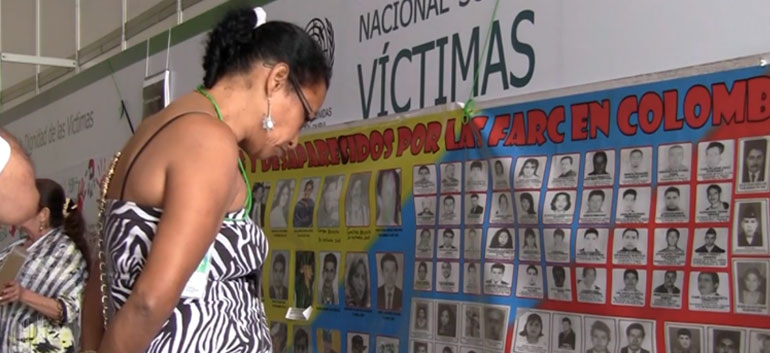More than seven million Colombians have become a victim of the country’s conflict, according to the government. This year alone, more than a 100,000 people were victimized.
According to the government’s Victim’s Unit, political violence in Colombia left 7,028,776 victims between 1956 and November 1 this year.
The majority of these victims were victimized after the year 2000 when the conflict had escalated and leftist rebel groups like the FARC and ELN were fighting both the Colombian military and state-aligned paramilitary groups.
Chronology of victimization
It was in the same period that the fighting between the military and guerrillas, and a violent expansion of paramilitary group AUC caused massive displacement mainly among Colombia’s rural population.
Number of victims likely higher
The official estimation could be low as independent statistics regarding displacement show a higher number of victims in recent years than the Victim’s Unit has recognized.
According to the latest Victim’s Unit report, 6 million were victim of forced displacement alone, and more than 930,000 people have been killed, 150,000 were forcibly disappeared and 90 thousand lost their home or belongings.
Additionally, some 37 thousand Colombians were the victim of kidnapping and 80 thousand were the victim in a terrorist attack.
In February, when the Victim’s United presented its last report, it had only registered 6,043.473 victims of which 220,000 were fatalities.
MORE: 6 million Colombians considered victim of armed conflict
Geography of victimization
The state with most victims is Antioquia, of which Medellin is the capital, followed by the national capital Bogota and the southwestern state of Valle del Cauca.
However, when comparing the prevalence of victimization, the most affected states are Guaviare where 76% of the population is victim, Choco (72%), Putumayo (70%) and Caqueta (65%).
Colombia’s conflict began in 1956 after decades of political and some violent tensions between Liberals and Conservatives. The killing of presidential candidate Jorge Eliecer Gaitan that year sparked a wave of violence that killed 200,000 in the decade that followed and is referred to as “The Violence” in Colombia.
The conflict complicated further after 1964 when organized guerrilla groups like the FARC and ELN began opposing the state from their rural strongholds.
After cocaine consumption across the world became fashionable at the end of the 1970s, the drug trade began fueling the violence that had already lasted decades. Particularly in the 1990s and first decade of this century, violence peaked.
A successful military offensive pushing the FARC and ELN away from the cities and economically important areas, and the demobilization of 30,000 paramilitary fighters between 2003 and 2006 significantly decreased the levels of violence in Colombia.


